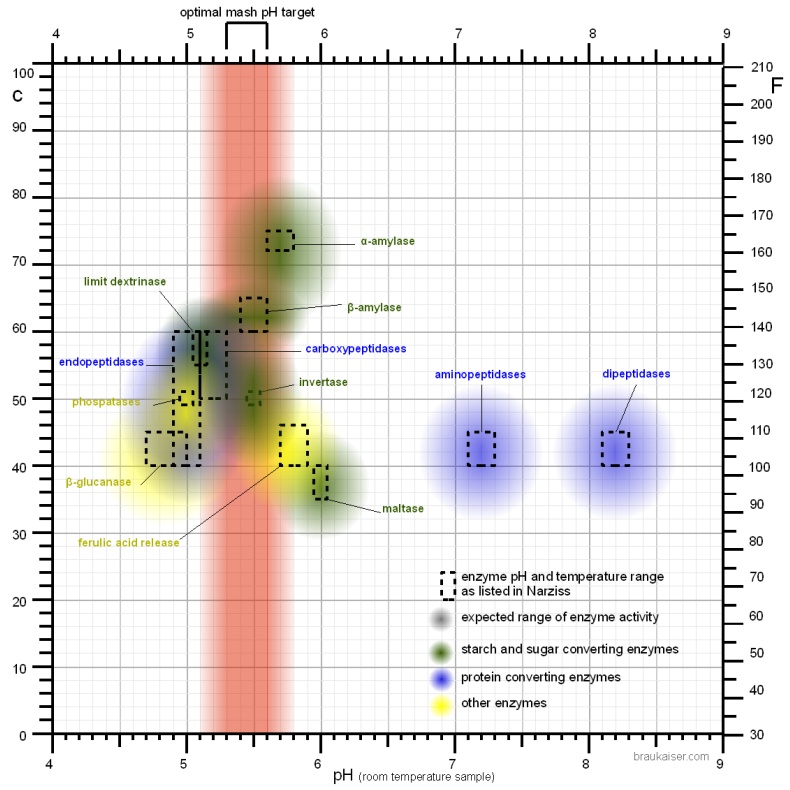nostalgia
Well-Known Member
I've been having problems with efficiency (in the 50's) and stuck runoffs with recipes using a lot of flaked rye and oatmeal. For an oatmeal stout today I decided to try a protein rest for the first time. Here's the recipe:
9.00 lb Munich Malt - 10L (10.0 SRM) Grain
1.00 lb Oats, Flaked (1.0 SRM) Grain
0.50 lb Black (Patent) Malt (500.0 SRM) Grain
0.50 lb Chocolate Malt (350.0 SRM) Grain
Protein Rest: Add 9.90 qt of water at 132.1 F
- Hold mash at 122.0 F for 30 min
Saccrification: Add 8.80 qt of water at 206.7 F
- Hold mash at 158.0 F for 30 min
-- Sparge with 3.93 gal of 168.0 F water.
So I put the 9.9qt water in my MLT and when the temp came down to 132 I doughed in. The temp stabilized about 124F and I left it for 1/2 hour.
I then brought 9qt almost to a boil (my thermometer read 208) and pumped it into the mash. After vigorous stirring it stabilized down around 148F. I had to boil more water and pump in a lot more water to bring up the temp just to 154F.
So never having done a protein rest before, should I have done something different to get the mash temps to follow what Beersmith caluclated above?
I'm also wondering about you guys who use a separate HLT, how do you control the temp and volume that ends up in the mash?
The good news is the protein rest seems to have done its job. I had great flow during runoff of both my first runnings and my sparge. I also got 74% efficiency.
-Joe
9.00 lb Munich Malt - 10L (10.0 SRM) Grain
1.00 lb Oats, Flaked (1.0 SRM) Grain
0.50 lb Black (Patent) Malt (500.0 SRM) Grain
0.50 lb Chocolate Malt (350.0 SRM) Grain
Protein Rest: Add 9.90 qt of water at 132.1 F
- Hold mash at 122.0 F for 30 min
Saccrification: Add 8.80 qt of water at 206.7 F
- Hold mash at 158.0 F for 30 min
-- Sparge with 3.93 gal of 168.0 F water.
So I put the 9.9qt water in my MLT and when the temp came down to 132 I doughed in. The temp stabilized about 124F and I left it for 1/2 hour.
I then brought 9qt almost to a boil (my thermometer read 208) and pumped it into the mash. After vigorous stirring it stabilized down around 148F. I had to boil more water and pump in a lot more water to bring up the temp just to 154F.
So never having done a protein rest before, should I have done something different to get the mash temps to follow what Beersmith caluclated above?
I'm also wondering about you guys who use a separate HLT, how do you control the temp and volume that ends up in the mash?
The good news is the protein rest seems to have done its job. I had great flow during runoff of both my first runnings and my sparge. I also got 74% efficiency.
-Joe




